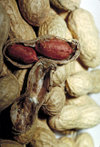What is anaphylaxis?
Anaphylaxis (say "anna-full-ax-iss") is a life-threatening allergic reaction. It starts soon after you are exposed to something to which you are allergic. You may have swelling, itching, or a rash. Some people have trouble breathing, a tight feeling in their chest, dizziness, and they feel anxious. Other people have stomach cramps, nausea, or diarrhea. Some people lose consciousness ("pass out").
What causes anaphylaxis?
Many things can cause anaphylaxis. The cause is different for each person and can be hard to find. Some common causes include the following:
* Foods, such as shellfish, nuts, peanuts, eggs, and fruits
* Medicines, such as antibiotics, aspirin, over-the-counter pain relievers, allergy shots, and contrast dye for radiologic procedures
* Latex, or rubber, which is found in surgical gloves, medical supplies, and many products in your home
* Insect stings, especially from bees, wasps, hornets, yellow jackets, sawflies, and fire ants
How do I prevent a reaction?
You can do many things to help prevent a reaction.
* If you have had anaphylaxis, make sure your doctor and dentist know and that it is recorded on your medical chart. Tell them what you are allergic to if you know.
* Keep an emergency anaphylaxis kit with you at all times. Make sure the people around you, such as your family and friends, know how to use it.
* If you are allergic to insect stings, wear protective clothing and insect repellent when outside.
* Avoid handling or eating foods to which you are allergic. Even tiny amounts mixed by accident into your food can cause a reaction. Read the ingredient list on packaged foods you are going to eat.
* Wear or carry a medical alert bracelet, necklace, or keychain that warns emergency medical technicians (EMTs) and doctors that you are at risk for anaphylaxis.
* Ask your doctor if you need desensitization shots.
* Ask your doctor if there are other things to which you also might be allergic.
What is in an emergency anaphylaxis kit?
An emergency anaphylaxis kit is what you or people around you can use if you have a severe allergic reaction. You might need medical help right away. The kit contains the epinephrine medicine that you inject into your arm or leg (or have a friend inject). Your doctor will prescribe a kit with the right dose of medicine and teach you how to use it. Make sure your family, friends, and others also know how to use the kit. Sometimes your doctor will tell you to keep an antihistamine, such as diphenhydramine (one brand name: Benadryl), in the kit.
How do I treat future anaphylaxis reactions?
Call 911 to get emergency medical help, even if you do not feel very sick. Get your anaphylaxis kit. Inject yourself with epinephrine or have someone help. Take an antihistamine if your doctor recommends it. If you stop breathing, you may need CPR (cardiopulmonary resuscitation) until help arrives.
What can I expect after an allergic reaction?
You should recover completely with treatment. Most people live a normal, full life. You can get back to your normal activities once you are feeling better. However, you should have someone stay with you for 24 hours after an attack to make sure another attack does not happen.
Where can I get more information?
Your doctor.
American Academy of Allergy, Asthma, and Immunology
Telephone: 1-800-822-2762
Web address: www.aaaai.org
Food Allergy and Anaphylaxis Network
Telephone: 1-800-929-4040
Web address: www.foodallergy.org/index.html
Medic-Alert Bracelet (medical identification)
Telephone: 1-800-432-5378
Web address: www.medicalert.org
COPYRIGHT 2003 American Academy of Family Physicians
COPYRIGHT 2003 Gale Group



